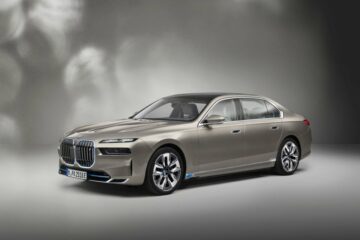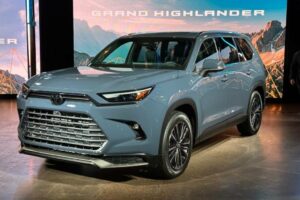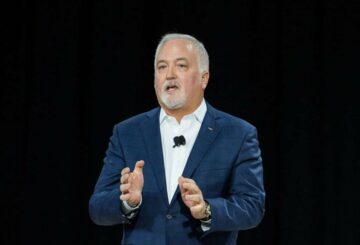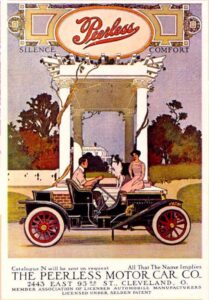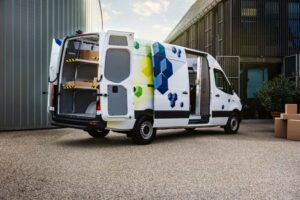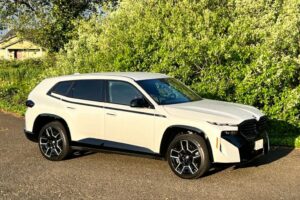For Volkswagen, the search for a suitable replacement for the once-iconic Microbus has been a case of try and try again … and then keep trying over and over again.
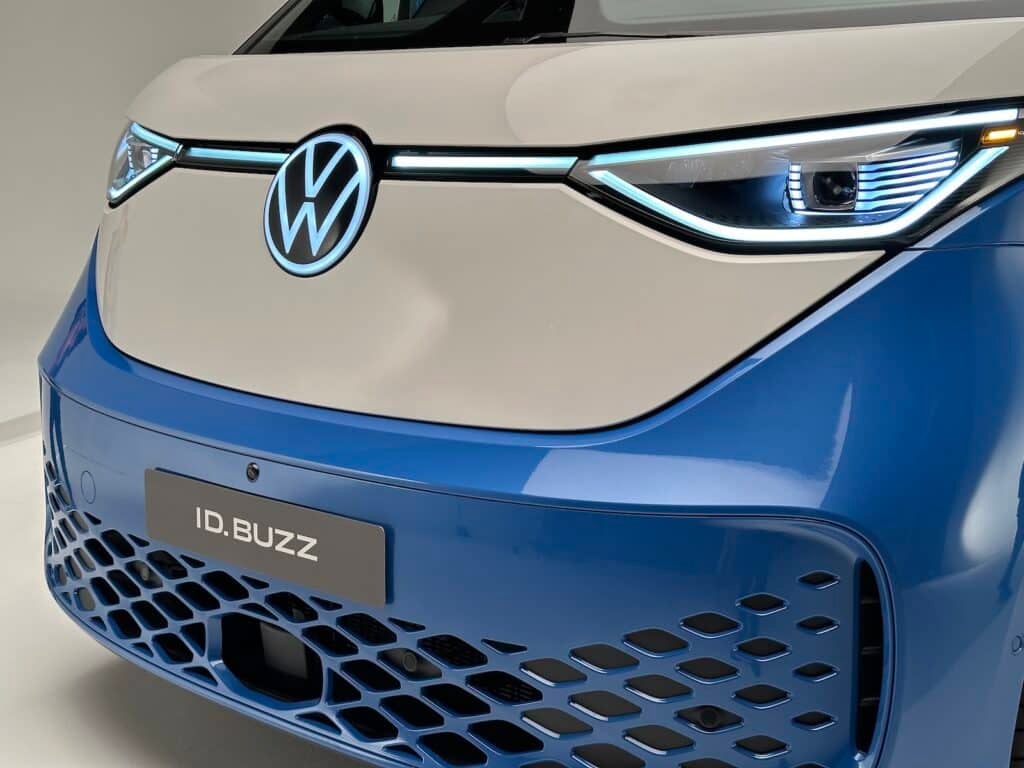
Since the last version of the van was pulled from production 20 years ago, the German automaker has come up with one concept after another. But they all seemed to miss the mark. Until it rolled out an all-electric prototype in 2016 that finally captured the right formula, the mix of distinctive design and functionality that made the original Microbus a long-running success story.
What’s now known as the ID.Buzz made its debut in two-row form in Europe last year. And on Friday, the automaker officially pulled the wraps off the three-row, long-wheelbase version that will follow for the U.S. market.
A “hero car”
Describing the Buzz as a “hero car” for the brand, Volkswagen Group of America CEO Pablo Di Si said “This is not just another (new product) launch. This is the launch for us because the love affair this vehicle has with U.S. consumers is incredible.”
While VW sold the van all over the world, there’s no question that the people mover most commonly known as the Microbus had a special grip on the American marketplace.
First known as the Transporter, or Type 2, it came about almost by accident. Ben Pon, Volkswagen’s Dutch distributor, came up with an early sketch after visiting VW’s headquarters in Wolfsburg, nearly restored after being flattened by Allied bombers during World War II. It took some tinkering, but a a production version rolled off the assembly line in March 1950.
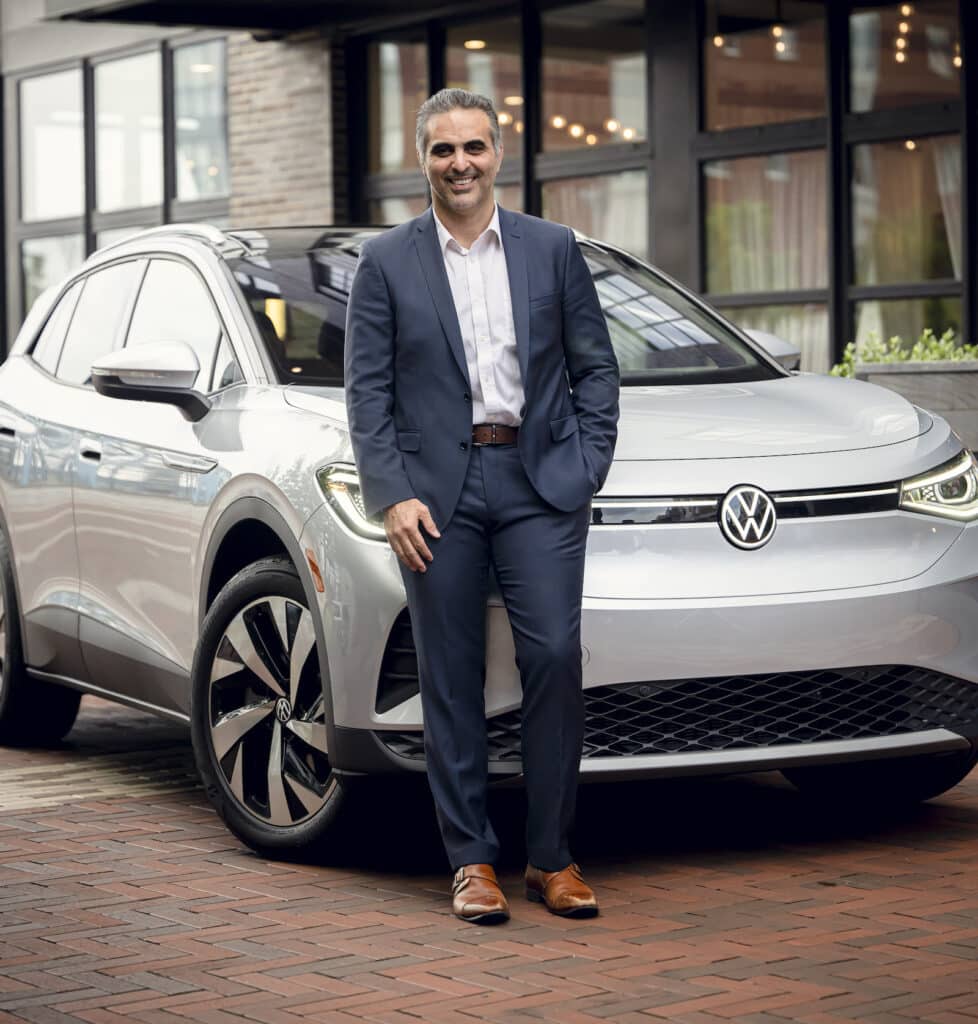
A symbol of protest
It followed the Type 1 – better known as the Volkswagen Beetle – to the U.S. a few years later. And, like the bug-shaped coupe, the Microbus carved out a unique niche. It became an icon of the ‘60s counterculture.
“For many people, the VW Microbus became the symbol of protest with Detroit’s overpowered cars and society in general,” Roger White, curator of road transportation history with the Smithsonian Museum told Smithsonian Magazine. “It was a way of thumbing their noses at the establishment.”
Like the Beetle, it was inexpensive to buy, cheap to operate. It was a distinctive alternative to the Detroit-built station wagons that, back then, were America’s family staple. And the Microbus was flexible enough to be customized in all sorts of ways. For then-young Baby Boomers, they could simply pull out the back bench seats, toss in a mattress and it became a “hippie bus.”
In trendy California, the Microbus was seemingly everywhere, whether at Grateful Dead concert or a surfing beach. And its popularity soon spread across the country.
Endless variants
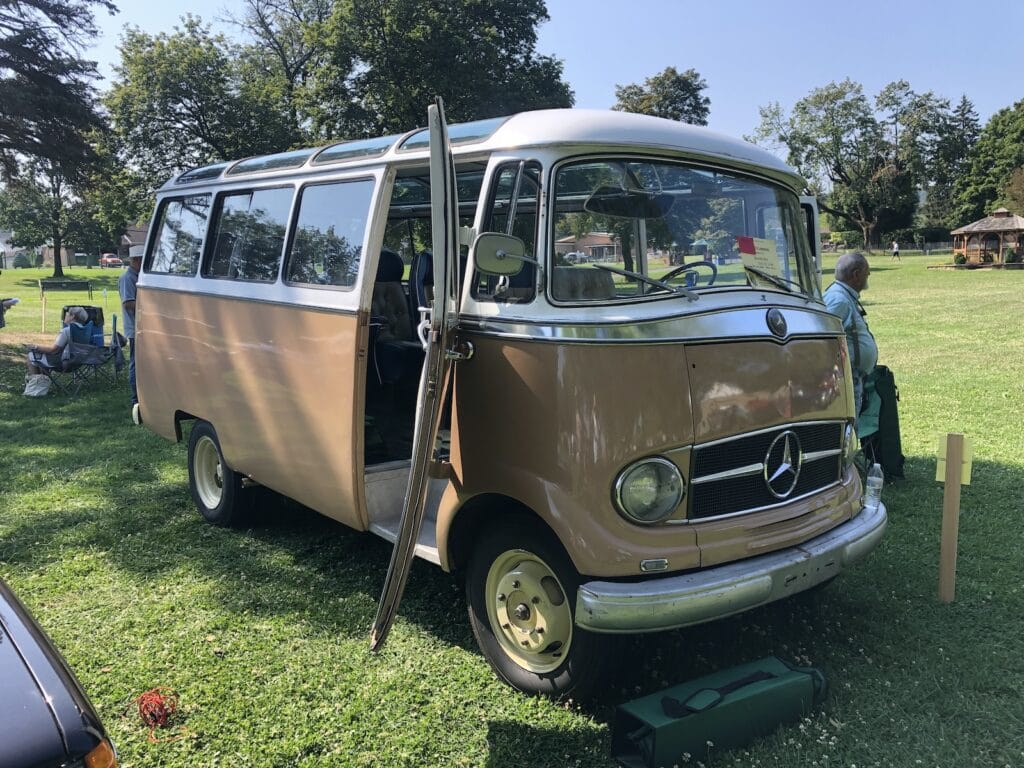
A self-described hippie, Bruce Freeburger was driving his 1967 T2 across Canada on his way from Detroit to northern New York for the 1970 Trans Am race at Watkins Glen. “I didn’t know hitchhiking was illegal,” he said, recalling he picked up several hitchhikers along the way and then was asked to “fill up the bus with hippies” when he crossed the border at Buffalo.
At its height, the Microbus was one of Volkswagen’s most popular products worldwide. And the automaker kept finding new niches by rolling out a steady stream of variants. There were panel vans, campers, pickup versions, even ambulances.
The 23-window variant, often known as the Samba Bus, is today a highly sought-after collectible. In mint condition, some have gone for over $100,000.
The beginning of the end
But faced with increasingly strict new safety and emissions standards, VW was forced to make changes to the van’s distinctive styling and engineering. The second-generation model launched in 1967 abandoned the distinctive split windshield, and subsequent updates strayed even further.

By the late 1970s, VW had squared off the Microbus’s familiar, rounded corners and replaced its air-cooled engine with a water-cooled alternative. The front end soon became harder to distinguish from the new minivans rolling out of Detroit and Japan. And by the 1990s and early 2000s, what was renamed the Volkswagen Transporter became little more than an afterthought to U.S. buyers. With minivan sales, on the whole, sliding by the year, VW pulled the people mover from the market.
But it was determined to find a way back. In 2001, it launched to first in a series of prototypes, the Volkswagen Microbus Concept, promising to put it into production by 2007. But it missed the distinctive look of the original — with a bulbous nose meant to meet modern crash standards — and the plans were scrapped.
Bulli and BUDD-e
Several other concepts followed, including the 2011 Bulli and 2016 BUDD-e. They came a bit closer but still failed to find the right spark.
“There was a ton of consumer interest in those concepts, but Volkswagen chose not to do them,” said Eric Noble, president of the automotive research firm, CarLab.
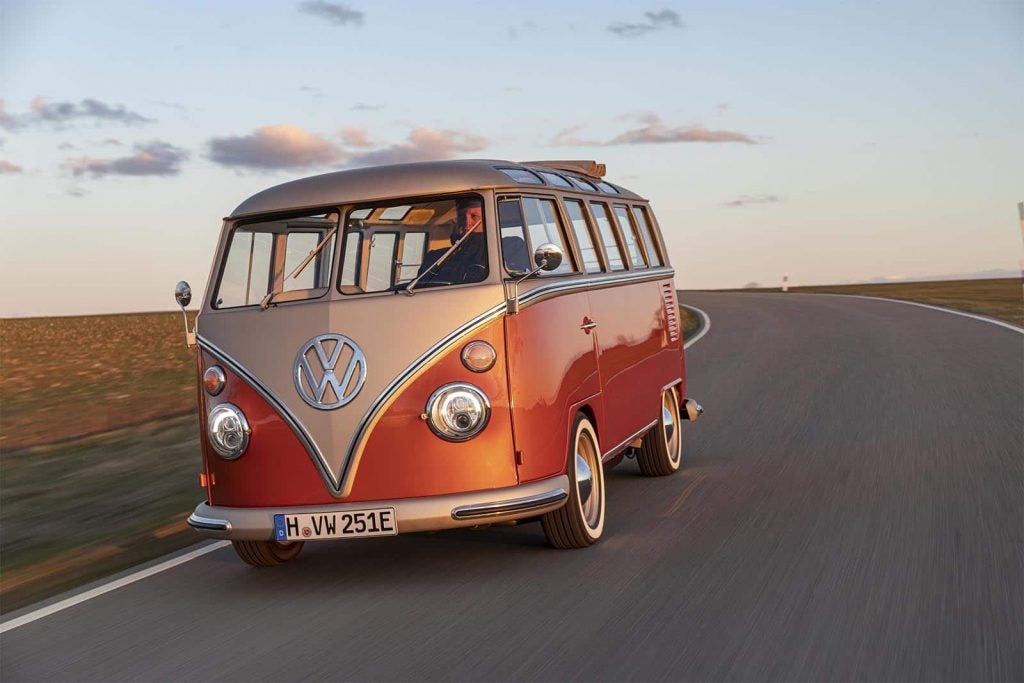
Then, in 2017, VW rolled out the ID Buzz concept at the North American International Auto Show in Detroit. The reception from both the public and the automotive media was overwhelming and, a few months later, the automaker confirmed it would go into production.
The basic silhouette comes surprisingly close to the original, and it retains some of the early styling cues – though it is a decidedly more modern design, with an emphasis on range-extending aerodynamics. The critical difference, of course, is the adoption of an all-electric drivetrain – with the battery pack and motors mounted below the load floor.
More than nostalgia
It took five years to launch the European version. And the U.S. model, stretched 10 inches, with an added row of seats, won’t show up until 2024.
CarLab President Noble is cautious about the opportunities for the ID.Buzz. “We’re not really sur how big a market there is for anything that’s primary pull is nostalgia,” he told TheDetroitBureau.com. “ID.Buzz is going to have to work, not a rebirth of the microbus but as a product that can stand on its own.”
But VW officials are far more upbeat, considering the initial reception in Europe and the ongoing buzz the Buzz is getting in the States.
“I think we’re going to be overwhelmed next year with orders,” said Pablo Di Si, the president and CEO of the Volkswagen Group of America. He expects that combined demand from the U.S. and Europe will quickly exceed the 100,000-unit production capacity at the plant in Hanover, Germany building the ID.Buzz.
- SEO Powered Content & PR Distribution. Get Amplified Today.
- PlatoAiStream. Web3 Data Intelligence. Knowledge Amplified. Access Here.
- Minting the Future w Adryenn Ashley. Access Here.
- Buy and Sell Shares in PRE-IPO Companies with PREIPO®. Access Here.
- Source: https://www.thedetroitbureau.com/2023/06/building-buzz-how-volkswagen-went-from-the-microbus-to-the-id-buzz/
- :has
- :is
- :not
- $UP
- 000
- 1
- 10
- 100
- 20
- 20 years
- 2001
- 2011
- 2016
- 2017
- 2024
- a
- About
- accident
- across
- added
- Adoption
- After
- again
- ago
- All
- all-electric
- along
- alternative
- am
- Ambulances
- america
- American
- an
- and
- Another
- anything
- ARE
- AS
- Assembly
- At
- auto
- automotive
- Baby
- back
- basic
- battery
- BE
- Beach
- became
- because
- been
- Beginning
- being
- below
- ben
- Better
- Big
- Bit
- border
- both
- brand
- Bruce
- Buffalo
- Building
- built
- Bureau
- bus
- but
- buy
- buyers
- by
- california
- came
- CAN
- Canada
- Capacity
- captured
- cars
- case
- cautious
- ceo
- Changes
- cheap
- chose
- Close
- closer
- Collectible
- COM
- combined
- come
- comes
- commonly
- Companies
- concept
- concepts
- concert
- condition
- CONFIRMED
- connected
- considering
- consumer
- Consumers
- corners
- could
- country
- course
- Crash
- critical
- Crossed
- customized
- dead
- debut
- Demand
- Design
- determined
- difference
- distinctive
- distinguish
- do
- driving
- during
- Dutch
- Early
- Emissions
- emphasis
- end
- Engine
- Engineering
- enough
- establishment
- Europe
- European
- Even
- exceed
- expects
- faced
- Failed
- familiar
- family
- far
- few
- Finally
- Find
- finding
- Firm
- First
- flexible
- Floor
- Focus
- follow
- followed
- For
- form
- formula
- Friday
- from
- front
- Front end
- functionality
- further
- General
- German
- Germany
- getting
- Go
- going
- gone
- grateful
- Group
- had
- Have
- he
- Headquarters
- height
- highly
- his
- history
- How
- HTTPS
- ICON
- ID
- ii
- Illegal
- in
- inches
- Including
- increasingly
- incredible
- inexpensive
- initial
- interest
- International
- into
- IT
- ITS
- Japan
- jpg
- just
- Keep
- kept
- Know
- known
- Last
- Last Year
- Late
- later
- launch
- launched
- like
- Line
- little
- load
- Look
- love
- made
- magazine
- make
- many
- many people
- March
- mark
- Market
- marketplace
- max-width
- meant
- Media
- Meet
- mint
- missed
- model
- Modern
- months
- more
- most
- Most Popular
- Motors
- Museum
- nearly
- New
- new product
- New York
- next
- no
- Noble
- North
- nose
- now
- of
- off
- Officially
- officials
- often
- on
- ONE
- ongoing
- operate
- opportunities
- or
- orders
- original
- Other
- out
- over
- overwhelmed
- own
- Pack
- panel
- part
- People
- picked
- Pickup
- plans
- plato
- Plato Data Intelligence
- PlatoData
- Popular
- popularity
- president
- primary
- Product
- Production
- Products
- promising
- protest
- prototype
- prototypes
- public
- put
- question
- quickly
- Race
- really
- reception
- replaced
- replacement
- research
- right
- road
- Rolled
- Rolling
- ROW
- s
- Safety
- Said
- sales
- Samba
- Search
- seemed
- Series
- several
- show
- simply
- sliding
- Society
- sold
- some
- Soon
- Spark
- special
- split
- spread
- Squared
- stand
- standards
- States
- station
- steady
- Still
- Story
- stream
- strict
- subsequent
- success
- success story
- suitable
- symbol
- than
- that
- The
- The Buzz
- the world
- their
- Them
- then
- There.
- they
- think
- this
- those
- though?
- to
- today
- Ton
- took
- toss
- transportation
- try
- type
- u.s.
- unique
- until
- Updates
- us
- Variant
- vehicle
- version
- volkswagen
- Volkswagen Group
- vw
- war
- was
- Way..
- ways
- went
- were
- What
- when
- whether
- white
- WHO
- whole
- will
- with
- Work
- world
- worldwide
- would
- year
- years
- york
- zephyrnet


